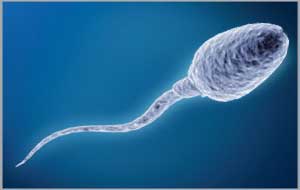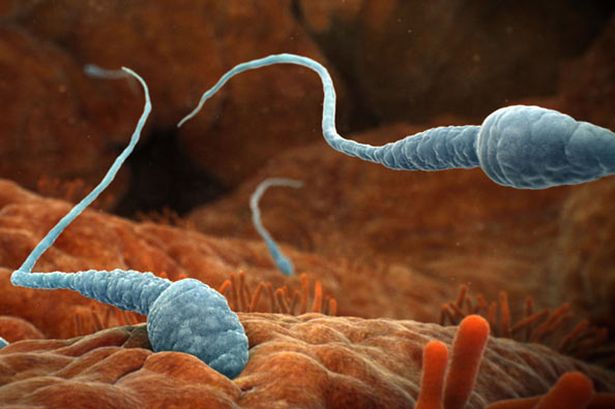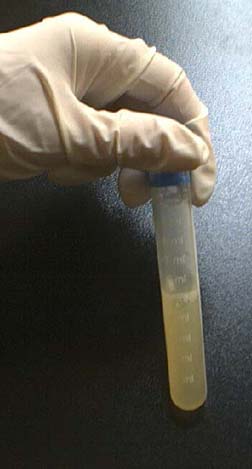A reliable source on many subjects.

A reliable source on many subjects.

 What is sperm? But when it comes to defining sperm, it’s not quite as simple as that. And if you want to know how to produce more sperm, for example, you first need to know what this magical substance is. This substance produced by man during sexual activity, which is the origin of life.
What is sperm? But when it comes to defining sperm, it’s not quite as simple as that. And if you want to know how to produce more sperm, for example, you first need to know what this magical substance is. This substance produced by man during sexual activity, which is the origin of life.
Who among us doesn’t remember that first time we ejaculated? Oh Stupefaction, Surprise, Fear, Laughter… all sensations a man might feel when he ejaculates for the first time.
So, what is semen? How can we produce more of it? And much more!
Today, we’re going to introduce you to this liquid that has intrigued men throughout history.
Sperm is a biological fluid that exits the penis through the urinary meatus after sexual stimulation, normally leading to orgasm.
Contrary to popular belief, sperm doesn’t just contain spermatozoa. Sperm live and move in sperm thanks to other components: vitamins (C and B12), zinc, sugar, calcium, phosphorus, magnesium, potassium, hormones (such as testosterone) and other vital components. These components are there to guarantee the sperm a good environment in which to live and move around.
Many people think that sperm is permanently located in the testicles: they imagine them to be little bags filled with sperm all the time! Some people even think that when a man has large testicles, he produces more sperm! Well, no! The testicles contain only part of the sperm.
In fact, the seminal fluid that carries sperm comes from secretions of the prostate, seminal vesicles and Cowper’s gland.
A sperm with a flagellum, or “tail”, can be described as uniflagellate. The flagellum moves in a wavy pattern, propelling the sperm towards the egg. Flagellate spermatozoa are also known as motile spermatozoa. (A non-motile spermatozoon that lacks a flagellum is called spermatia).
A sperm can contain an X chromosome and, after fertilization of the egg, create a female being. If the egg contains a Y chromosome, fertilization will result in the development of a male. We’d love to tell you more about X and Y chromosomes, but we’re afraid this article will turn into a natural science lesson!
The spermatozoon has a head of around 3 to 5 um and a flagellum around 50 um long. It has little cytoplasm, but the head or front of a spermatozoon has a high DNA content. Once ejaculation has taken place, the alkaline sperm doesn’t allow these little creatures to be completely mobile. It’s only when they reach the female reproductive tract that, thanks to the vagina’s acidic pH, they enjoy greater mobility.
See for yourself? It’s not enough just to have more sperm: it has to contain perfectly healthy spermatozoa to be of any use. By the way, what’s the point of sperm?
Good question! Sperm isn’t just there to look pretty at the end of a sexual encounter! Nor is it initially used to be swallowed after an in-your-face ejaculation! First and foremost, it’s used to make children!
This liquid, which is transported into the body and ejaculated at the bottom of the vagina, is intended first and foremost to fertilize an ovum waiting quietly in the depths of the woman’s uterus. Whether a man is fertile or sterile depends on the health of his sperm and spermatozoa. To find out more about sperm quality, we invite you to continue reading at Sperm quality.
Now that we know what sperm is and what it’s used for, we should learn how it’s produced.
Sperm production is an integral part of the male reproductive cycle. Which organs are responsible for its production? How are they produced? All these questions lead us to the heart of man’s reproductive function, to understand how sperm is produced.
Let’s go back to the very beginning of the creation process of this substance so precious for the continuity of our species on Earth.
Sperm is a biological liquid produced by various organs, from the embryonic stage through to puberty, and reaching maturity between the ages of 13 and 30. But this production is by no means possible without the genitalia. In the case of men, these are the testicles.
The testicle is an organ belonging to the male reproductive system. It’s the mainstay of sperm production, since it performs two functions in its own right:
Consisting of a pair, the testicles then become the gonads, playing a synergistic role in sperm production.
If the testicles alone perform two functions: hormone production and sperm production, how are sperm produced?

Sperm are produced, stored and delivered by the male reproductive system. The male reproductive system comprises the testes, urethra, prostate gland, seminal vesicles and penis.
The testicles contain structures called seminiferous tubules, which are the production areas for sperm. They produce no less than 12 billion spermatozoa per month. The epididymis lies above the seminiferous tubules. Immature sperm migrate from the seminiferous tubules and are stored until maturity.
Prior to intercourse, the penis fills with blood, resulting in an erection. With sufficient stimulation, the ejaculatory process begins. Mature sperm travel from the epididymis via the vas deferens.
The vas deferens is a narrow muscular tube about 10 centimetres long. Contraction of the smooth muscles propels the sperm forward. They reach the glans penis, the widest part of the vas deferens, and then pass into the ejaculatory ducts.
In the ejaculatory ducts, a secretion of fluid from the seminal vesicles mixes with the sperm. The seminal fluid contains fructose sugar, which is associated with the sperm as a kind of fuel.
Then, they are fused or equipped with alkalines, which help them counteract the naturally acidic environment of the vagina and uterus to provide the sperm with a better chance of survival.
Sperm are produced in the male testicle. The testicle is filled with tiny coiled tubes (seminiferous tubules) through which sperm can move.
Each seminiferous tubule is lined with sperm nourishing cells (Sertoli cells) and sperm stem cells (spermatogonia).
On the outside of the tube and between the tubes are testosterone-producing cells (Leydig cells), whose product is essential for regulating sperm production. The hormones produced by Leydig cells stimulate sperm production, acting on the feeder cells, which in turn regulate sperm production.
Spermatogonial stem cells begin to divide at staggered intervals and continue to divide throughout a man’s life.
Spermatogonia have two objectives: to make more germ cells to keep the process going, and to use the cells to create mature sperm cells. This time, germ cells undergo mitosis (DNA duplication) and meiosis (DNA recombination) in the early stages of sperm production.
This is why men don’t run out of sperm, and why children don’t necessarily resemble their parents.
The spermatozoon starts out as a typical round cell and ends up with highly specialized functions to fertilize an egg. Excess cytoplasm is removed to reduce drag. The cell nucleus containing the sperm chromosomes is packed tightly and housed in the elongated sperm head.
Most of the excess organelles are removed with the cytoplasm, but the cell’s energy (mitochondria) is positioned just behind the head like the engines behind a rocket. Cellular structures are recycled to form the lid of the acrosome, a bundle of enzymes filled at the front of the sperm head that help penetrate neighboring egg cells.
Other cellular structures (centrioles) are also recycled to create the sperm tail, which is used for propulsion and direction.
The newly produced spermatozoon is not necessarily a good swimmer, and does not yet have great fertilizing power. These characteristics are acquired as it passes through the epididymides, a tightly coiled sperm duct at the top of the testicle.
Specific proteins are added to the sperm membrane and others are removed, resulting in the creation of a cell highly specialized in swimming and equipped with a fertilizing egg. The next fertilization should be the one! Fingers crossed.
Does it matter how much sperm is produced per sexual encounter? Do you have to produce an abundance? If not, how?
 If you’re thinking of improving both the quality and quantity of sperm you produce, here’s a list of essential factors to consider.
If you’re thinking of improving both the quality and quantity of sperm you produce, here’s a list of essential factors to consider.
There are factors beyond a man’s control that affect ejaculate quality, such as age and genetics. But, if you already follow your doctor’s advice and lead a healthy lifestyle, there are actions you can take to increase the volume and quality of your sperm.
Men who only focus on the quantity of sperm they produce should pay more attention to how to produce lots of quality sperm.
Here are some recommendations from health professionals on how to get plenty of sperm and also improve its effectiveness.
No matter how excited you are, it’s important to keep your libido (sex drive) in check, if only for a few days. If you intend to produce more sperm and increase its quality, you need to abstain from intercourse for a minimum of 3 days.
It’s not the end of the world, and believe it or not, it has its effect!
Some people recommend cold showers. But the general idea is to stay away from high-temperature environments. If you want to increase your sperm volume, you’d do well to stay away from saunas, jacuzzis, and spas.
We didn’t say it would be easy.
In fact, contrary to what many people tend to believe, high heat is not conducive to sexual activity – quite the contrary! It gradually destroys the sperm in your body.
Studies have shown that sperm counts drop when a person is overweight. This is not an absolute truth, however; it’s strongly advised to maintain a weight proportionate to your height so you can deliver better performance in bed! Good health = quality sperm in quantity.
Start by finding a licensed alternative practitioner or acupuncture expert. He or she will know what to do. Alternative medicine experts are always talking up the benefits of acupuncture for increasing a man’s sperm count.
Want lots of sperm? Then eat foods rich in vitamin E (nuts, oils), vitamin C (citrus fruits, peppers, tomatoes), folic acid, zinc (dairy products, meats, seafood) and don’t forget foods rich in antioxidants.
Celery contains androsterone and is known to improve libido. Oysters contain dopamine, zinc and omega-3 fatty acids, which increase sperm production. Pumpkin seeds, sardines and walnuts are also rich in omega-3s.
According to a study of a group of sexually healthy men, walnuts increase sperm motility,
Aim to consume at least 75 grams a day for three months. This is the conclusion of a study conducted by UCLA. The only advice we can give you is to make sure you don’t have a nut allergy!
Avoid junk food, foods rich in caffeine and mercury. Abstain from alcoholic beverages. If you really want to improve your life in all these areas, sacrifices will have to be made to achieve your goal.
To sum up, there are many ways to improve the quality and strength of your sperm. The most important are a healthy diet, regular exercise and an intake of certain vitamins and minerals such as zinc, iron and vitamins B, C and E.
It’s also important to stay away from alcoholic beverages, cigarettes and other drugs. These vices can have a very negative effect on the production of healthy sperm.
Many doctors also recommend avoiding hot baths and steam baths. The high temperature can kill sperm cells, preventing them from producing much sperm.
It does seem possible to produce more sperm! What are the right solutions?
As we’ve just seen, a healthy, balanced diet – especially one rich in sperm-boosting foods – will certainly help.
However, because a normal food system won’t always be able to guarantee you the best intake, you might want to consider trying out a few food supplements that might work better.
Also, to boost your sperm and your fertility too, we offer you a selection of the best 100% natural solutions tested by the SpécialHomme team.
Don’t hesitate to consult them to boost your sperm production and fill up on this essential substance for your virility.
TOP solutions for more sperm :